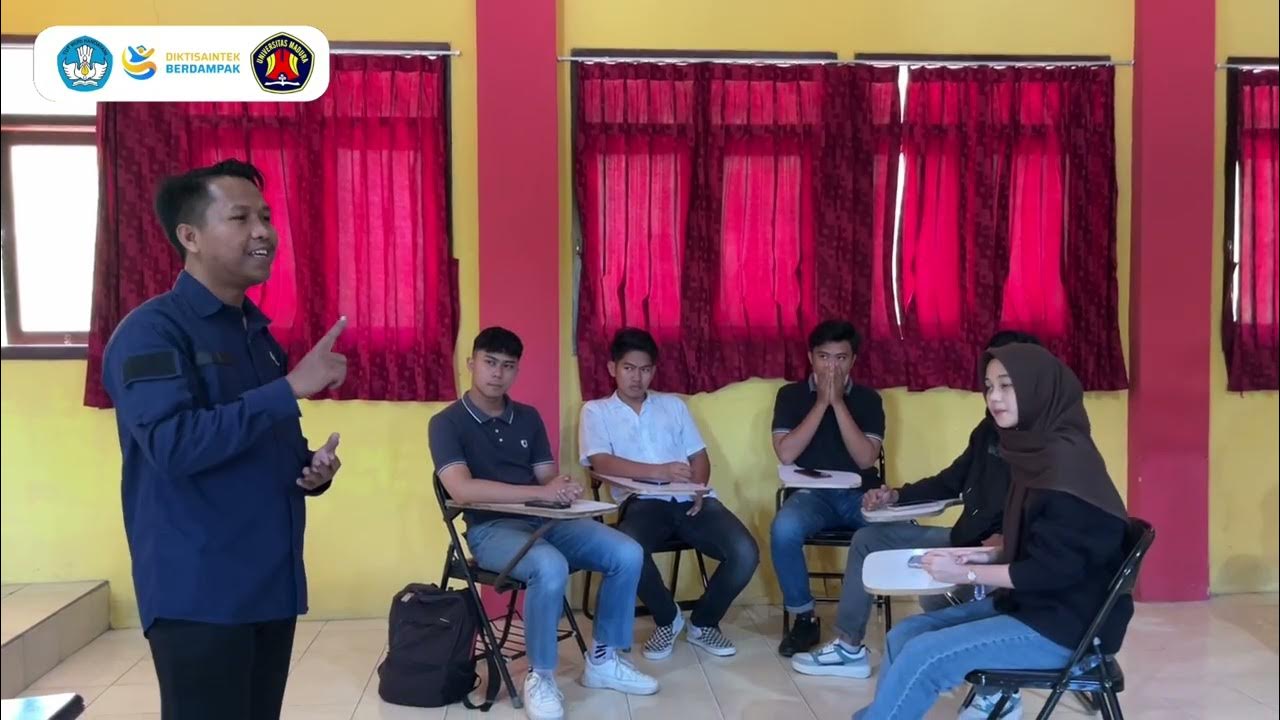PERTANGGUNGJAWABAN PIDANA (7/12)
Summary
TLDRThis video discusses the legal concept of *kesengajaan* (intentionality) in criminal law, particularly focusing on a case involving Apriani. Apriani consumed alcohol and narcotics, then drove at high speed without a license, resulting in dangerous actions. Despite her defense arguing a lack of harmful intent, the prosecutor asserts that her awareness of the situation and reckless behavior shows malicious intent. The video aims to educate viewers on criminal liability and the importance of understanding legal responsibility in cases involving negligence and intent.
Takeaways
- 😀 Criminal law focuses on determining guilt or innocence based on actions and intent.
- 😀 In the legal context, 'kesengajaan' (intent) is an essential factor in evaluating criminal responsibility.
- 😀 The speaker explains how actions such as driving under the influence or without a license can demonstrate criminal intent.
- 😀 The case involving Apriani illustrates how an individual’s awareness of their actions plays a key role in determining intent.
- 😀 Apriani's actions, including consuming alcohol and narcotics, were argued to be done with full awareness of their consequences.
- 😀 The legal concept of 'kesengajaan' emphasizes the subjective awareness and deliberate nature of one’s actions.
- 😀 Even if a defendant claims no intention to harm, the awareness and decision-making behind their actions can still indicate intent.
- 😀 Prosecutors use a defendant's awareness of their actions as evidence of 'kesengajaan', making it a critical element in criminal cases.
- 😀 The case demonstrates that the lack of a driver's license (SIM) and driving recklessly are clear indicators of criminal intent in the eyes of the law.
- 😀 The speaker concludes the lesson by encouraging viewers to engage with the content and look forward to more lessons on criminal law.
Q & A
What is the central focus of the video transcript?
-The video focuses on a legal case involving Apriani, who was accused of reckless behavior while under the influence of alcohol and drugs. The key legal issue discussed is whether her actions were intentional or not, as well as the concept of 'kesengajaan' (intentionality) in criminal law.
How does the speaker define 'kesengajaan' (intentionality) in the context of criminal law?
-In the context of the case, 'kesengajaan' refers to the defendant's awareness of the risks associated with their actions. The speaker emphasizes that intentionality in criminal law means knowing the potential harm one might cause, even if there was no explicit intention to harm someone.
What was Apriani's behavior that led to her legal troubles?
-Apriani engaged in reckless behavior by drinking alcohol, consuming narcotics, driving without a license, and speeding. These actions were all done with awareness of their potential dangers.
What does the defense argue regarding Apriani's actions?
-The defense argues that Apriani did not have the intention to harm anyone. They claim that there was no malicious intent behind her actions, and that she did not intend to cause harm.
What is the prosecution's stance on Apriani's behavior?
-The prosecution argues that Apriani's actions were intentional because she was fully aware of the risks involved. She knew she was drinking alcohol, consuming drugs, driving without a license, and speeding, which indicates intent to commit the reckless act.
Why does the prosecution consider Apriani's actions to be intentional?
-The prosecution considers Apriani's actions intentional because she was conscious of her behavior—she drank alcohol, took narcotics, knew she lacked a driver's license, and drove at high speeds. This awareness shows she acted with reckless disregard for others' safety.
What does the speaker mean when they refer to Apriani's 'sikap batinnya jahat' (evil mindset)?
-The term 'sikap batinnya jahat' refers to Apriani's internal attitude or mindset. It suggests that her actions were not just a result of poor judgment but also an intentional, reckless disregard for the consequences of her behavior.
What role does the lack of a driver's license play in this case?
-The lack of a driver's license is significant because it indicates that Apriani was not authorized to drive and likely had no formal training. This factor contributes to the argument that she was acting recklessly and intentionally, as she knowingly violated the law by driving without proper credentials.
How does the speaker's explanation enhance the understanding of criminal intent in this case?
-The speaker's explanation highlights that criminal intent is not solely about the explicit desire to harm someone, but about the awareness of the potential risks and consequences of one's actions. In this case, Apriani's conscious decision to engage in reckless behavior is viewed as an intentional act under criminal law.
What educational purpose does the speaker have for the audience in this video?
-The speaker aims to educate viewers about the concept of intentionality in criminal law. They explain how awareness of one's actions, even without explicit intent to harm, can still lead to criminal liability. The speaker encourages viewers to understand the legal implications of such behaviors and how they relate to the justice system.
Outlines

此内容仅限付费用户访问。 请升级后访问。
立即升级Mindmap

此内容仅限付费用户访问。 请升级后访问。
立即升级Keywords

此内容仅限付费用户访问。 请升级后访问。
立即升级Highlights

此内容仅限付费用户访问。 请升级后访问。
立即升级Transcripts

此内容仅限付费用户访问。 请升级后访问。
立即升级浏览更多相关视频

INTISARI HUKUM PIDANA: PERTANGGUNG JAWABAN PIDANA #2

#PodcastHukum - Eps. 24 BAHAS HABIS PROSES PIDANA MULAI DARI PENYELIDIKAN SAMPAI PUTUSAN PENGADILAN!

PENYERTAAN TINDAK PIDANA #IntisariHukumPidana 7

Mahsun Ismail. PDD-UKTPT Sertifikasi Dosen SMART 2025

Drug offenses

১৪৫ ধারা কী? | কখন ও কীভাবে জারি করা হয় ১৪৫ ধারা? | Section 145 of CrPC | ফৌজদারি কার্যবিধি
5.0 / 5 (0 votes)
